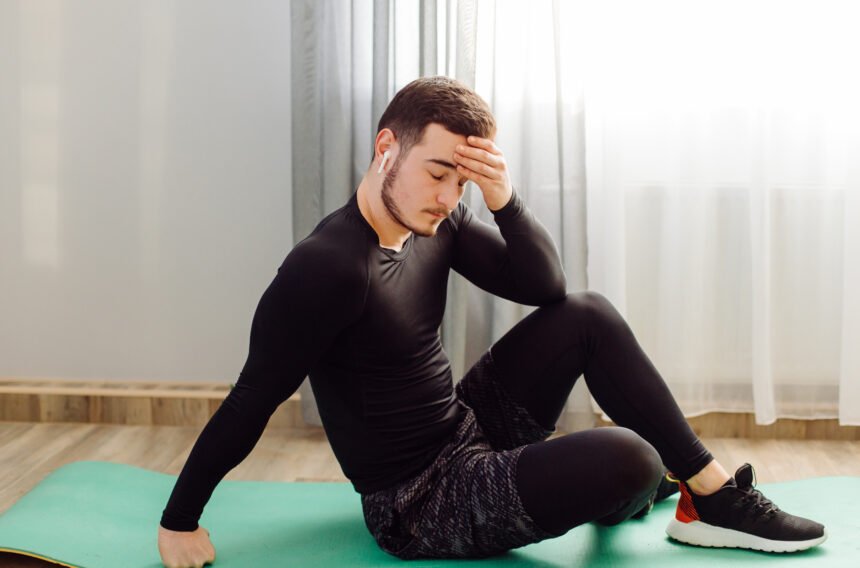Muscle soreness after a workout, often referred to as Delayed Onset Muscle Soreness (DOMS), can be a hurdle for fitness enthusiasts. Typically peaking 24-48 hours post-exercise, DOMS results from microscopic muscle damage during intense or new activities. While some soreness signals progress, excessive discomfort can derail your routine. As of 11:24 AM IST on Thursday, October 9, 2025, here’s a detailed guide to minimize muscle soreness and keep your fitness journey smooth.
Why Muscle Soreness Happens


DOMS arises from eccentric muscle contractions (lengthening under tension, like lowering weights) and unfamiliar movements. Factors include:
Microtears: Intense exercise causes small tears in muscle fibers, triggering inflammation and soreness.
Lactic Acid Myth: Contrary to popular belief, lactic acid buildup dissipates quickly and isn’t the primary cause.
Inflammation: The body’s repair process releases cytokines, contributing to stiffness.
New Routines: Starting a new workout or increasing intensity amplifies soreness.
Understanding this helps target prevention strategies effectively.
Proven Strategies to Avoid Muscle Soreness


Incorporate these evidence-based tips to reduce DOMS and recover faster:
1. Warm Up Properly
- Tip: Spend 5-10 minutes on dynamic stretches (e.g., leg swings, arm circles) and light cardio (e.g., jogging) before exercising.
- Why It Works: A 2024 Journal of Strength and Conditioning Research study found that a thorough warm-up increases blood flow, preparing muscles and reducing tear risk by 20%.
2. Use Progressive Overload
- Tip: Gradually increase weight, reps, or intensity by 5-10% weekly rather than jumping into heavy lifts.
- Why It Works: A 2025 Sports Medicine review showed progressive overload minimizes microtears, limiting soreness by allowing muscles to adapt over time.
3. Cool Down and Stretch
- Tip: After workouts, do 5-10 minutes of static stretching (e.g., hamstring stretch) and light movement.
- Why It Works: A 2023 Physical Therapy in Sport study indicated that cooling down reduces muscle stiffness and inflammation, cutting soreness duration by 15-25%.
4. Stay Hydrated
Tip: Drink 500-700ml of water 2 hours before exercise, and replenish with 150-250ml every 15-20 minutes during workouts. Aim for 2.5-3 liters daily.
Why It Works: Dehydration exacerbates muscle cramps and delays recovery, per a 2024 Journal of the International Society of Sports Nutrition. Proper hydration supports nutrient delivery to muscles.
5. Fuel with Nutrition
- Tip: Eat a post-workout meal with 20-30g protein (e.g., chicken, whey) and 40-60g carbs (e.g., sweet potato, rice) within 30-60 minutes. Include anti-inflammatory foods like turmeric or berries.
- Why It Works: A 2025 Nutrients study found that protein repairs muscle fibers, while carbs replenish glycogen, reducing soreness by 30%. Anti-inflammatory compounds lower cytokine levels.
6. Incorporate Active Recovery
- Tip: Engage in light activity (e.g., walking, yoga) on rest days for 20-30 minutes.
- Why It Works: A 2023 Journal of Applied Physiology study showed active recovery boosts circulation, flushing out waste products and reducing DOMS by 20-30%.
7. Use Foam Rolling or Massage
- Tip: Roll major muscle groups for 5-10 minutes post-workout or use a massage gun on sore spots.
- Why It Works: A 2024 Journal of Athletic Training trial found foam rolling decreases muscle tightness and inflammation, easing soreness by 25% within 24 hours.
8. Get Adequate Sleep
- Tip: Aim for 7-9 hours of quality sleep nightly, maintaining a consistent schedule.
- Why It Works: A 2025 Sleep study linked poor sleep to increased inflammation and delayed muscle repair, while 8 hours reduced soreness markers by 15%.
9. Consider Supplements (with Caution)
- Tip: Try 200-400mg magnesium, 500-1000mg vitamin C, or 3-6g fish oil daily, after consulting a doctor.
- Why It Works: A 2023 International Journal of Sport Nutrition and Exercise Metabolism review noted these supplements reduce oxidative stress and inflammation, potentially lowering DOMS by 10-20%.
Common Mistakes That Worsen Soreness
Avoid these pitfalls to keep soreness at bay:
Skipping Warm-Ups: Jumping into intense exercise without prep increases tear risk.
Overtraining: Working the same muscle group daily without rest prolongs recovery.
Poor Nutrition: Skipping protein or carbs post-workout slows repair.
Inadequate Rest: Insufficient sleep or recovery days heightens inflammation.
Sample Workout Recovery Plan


Here’s a daily routine to minimize soreness:
Pre-Workout (6:00 PM IST): 5-min dynamic stretches, 500ml water.
During Workout: 200ml water every 15 mins.
Post-Workout (7:00 PM IST): 5-min static stretches, 20g whey protein with banana, 5-min foam rolling.
Evening (9:00 PM IST): Light walk, hydrate with 300ml water.
Night (10:30 PM IST): Sleep by 11:00 PM.
When to Seek Help
Mild soreness fades in 3-5 days. Consult a doctor if you experience:
- Severe pain lasting over a week.
- Swelling, redness, or warmth (possible injury).
- Loss of mobility or strength.
Final Thoughts
Avoiding muscle soreness after working out is achievable with proper warm-ups, progressive training, nutrition, and recovery techniques. These strategies not only reduce DOMS but also enhance long-term fitness gains. Start small—add a warm-up or stretch routine today—and build consistency. By October 9, 2025, make soreness a thing of the past as you power through your workouts with ease.


